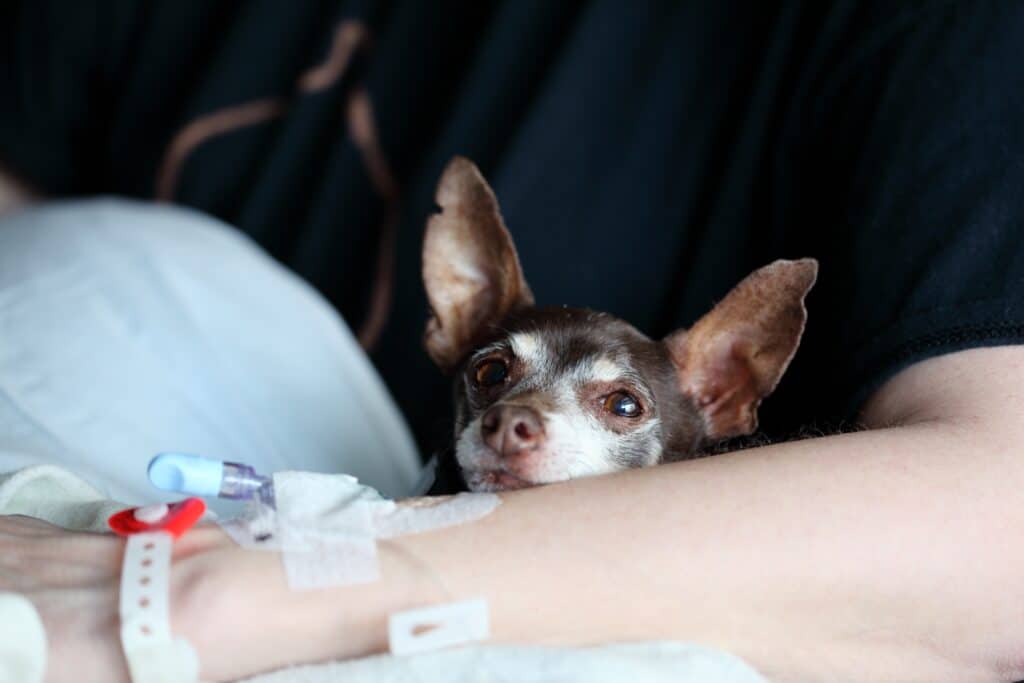



Infection control is a hot topic right now, with the COVID-19 coronavirus in the news and flu season underway. There’s a lot of discussion about ways to prevent infection with these high-profile bugs. But infection control is also very important for any therapy animal visit, and it’s one of the foundations of the standards for our Therapy Animal Program. Let’s take a look at why it’s so critical, and how therapy animal handlers can lead the way in demonstrating good infection control practices.
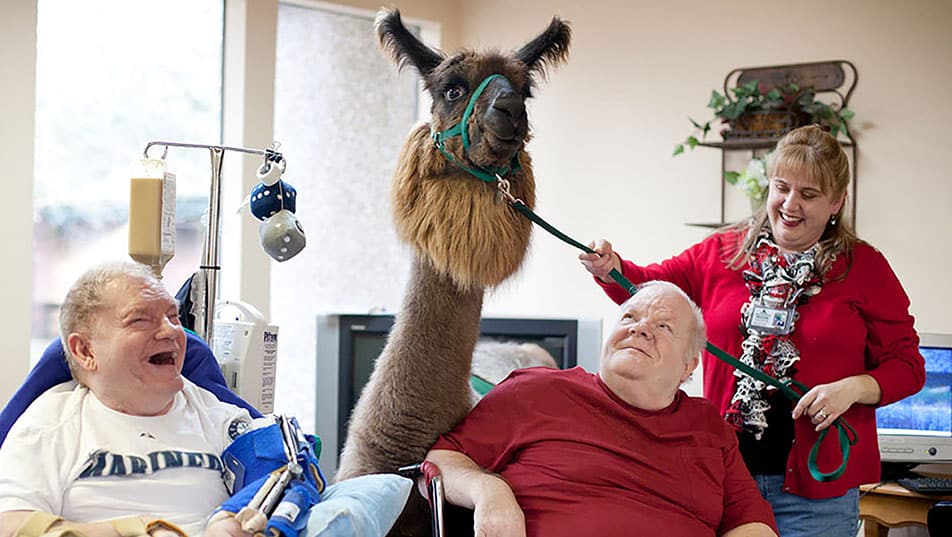
A therapy animal visit should be full of warm and cuddly experiences, and because of that many people don’t consider the possibility of infection while they’re petting a therapy dog or enjoying a visit with a therapy llama. But any time a human interacts with an animal there’s a possibility of catching or passing on an infection.
The Centers for Disease Control estimates that more than 6 out of every 10 known infectious diseases in people are spread from animals[i]. This includes both direct transmission from animals to humans of diseases such as rabies, salmonella, and some types of parasites; and diseases that can be carried and transmitted by animals that are otherwise healthy, such as bacteria that is passed on to a human via an animal’s fur. Also, many Pet Partners teams visit with clients who may have weakened immune function, which makes them more vulnerable to infection.
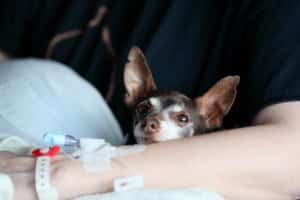 Concerns about infection are a common reason that therapy animals are denied access to facilities. Facilities may be worried that animals will expose clients to disease; that the animals will be dirty or carry parasites; or that animals might eliminate on clients or leave waste indoors. These concerns can be particularly strong with some of the less-common therapy animal species, though they exist for dogs as well. And every time a therapy animal is denied access, someone who could benefit from their visit misses out on the possibility of improved well-being.
Concerns about infection are a common reason that therapy animals are denied access to facilities. Facilities may be worried that animals will expose clients to disease; that the animals will be dirty or carry parasites; or that animals might eliminate on clients or leave waste indoors. These concerns can be particularly strong with some of the less-common therapy animal species, though they exist for dogs as well. And every time a therapy animal is denied access, someone who could benefit from their visit misses out on the possibility of improved well-being.
Minimizing these concerns and the risks of infection from therapy animals is a core reason for our Therapy Animal Program standards and registration process. Through our program requirements, we can help handlers minimize the possibility of infection for clients, while a Pet Partners registration tells facilities that a therapy animal team can visit safely because they meet the standards of our program.
Pet Partners has multiple ways to help minimize the potential of infection from a therapy animal visit. Prospective handlers receive education in these policies and procedures at the start of the registration process, and this knowledge is reinforced for experienced handlers through a knowledge assessment that’s required for registration renewal. While no procedure can completely eliminate the possibility of infection, these methods do reduce the risk that therapy animals might be a vector for disease.
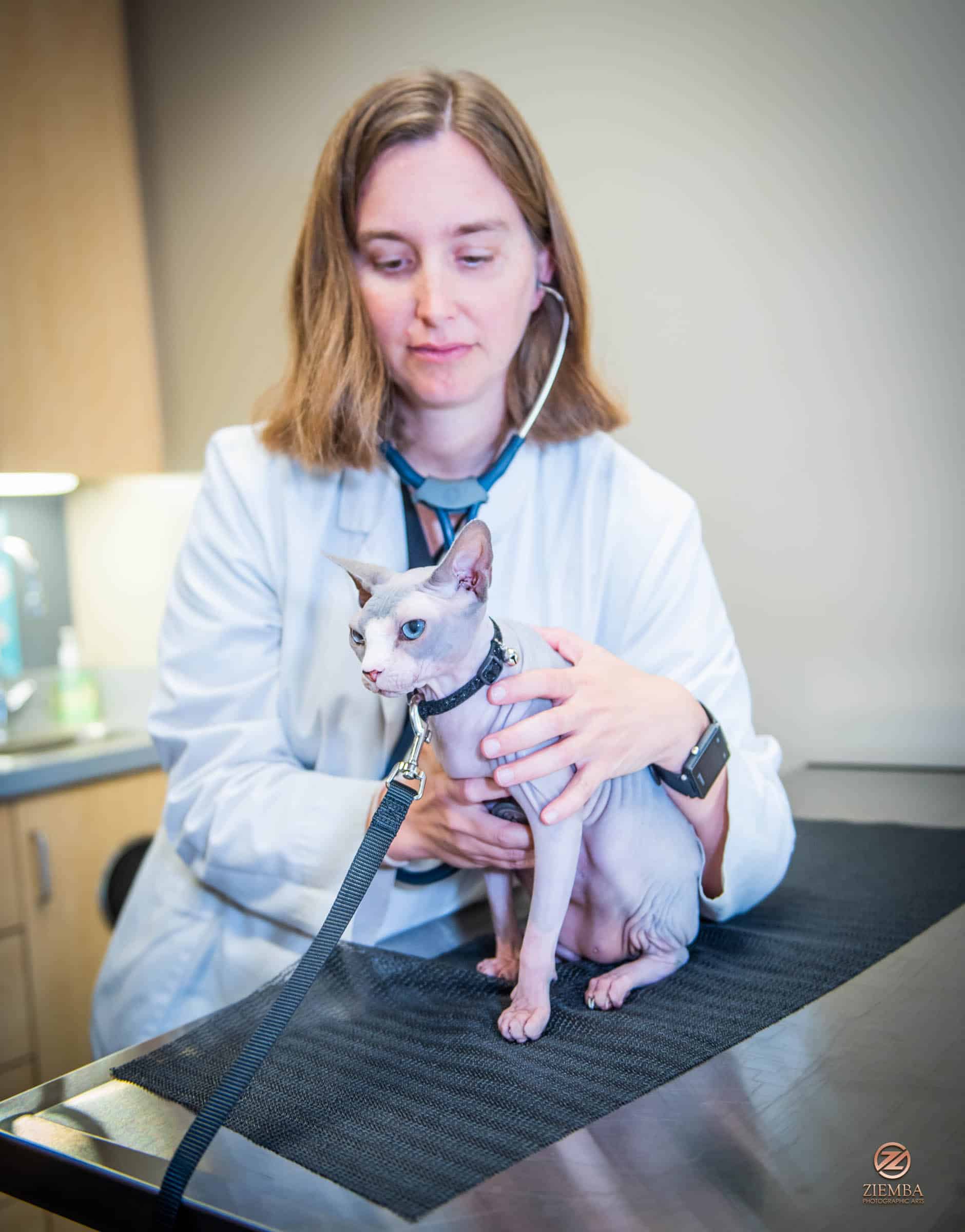 Animal health requirements. All therapy animals must have a health screening done by their veterinarian as part of registration, confirming that they are free of transmissible disease and parasites. We also require rabies vaccination for most species.
Animal health requirements. All therapy animals must have a health screening done by their veterinarian as part of registration, confirming that they are free of transmissible disease and parasites. We also require rabies vaccination for most species.
In addition, we have policies that restrict visiting by animals that have contracted a disease or that are being treated with immunosuppressant medications. An animal that is sick or has reduced immune function may be more likely to become ill and pass on an infection to clients. Waiting to visit until an animal is back to full health reduces the possibility that people might get sick too.
Prohibition on raw meat foods. Raw meat and other raw animal food products carry the risk of infecting pets with parasites and foodborne illness, which they could pass on to clients during visits. Pet Partners chooses to prohibit raw meat diets for therapy animals to remove this particular risk from therapy animal visits.
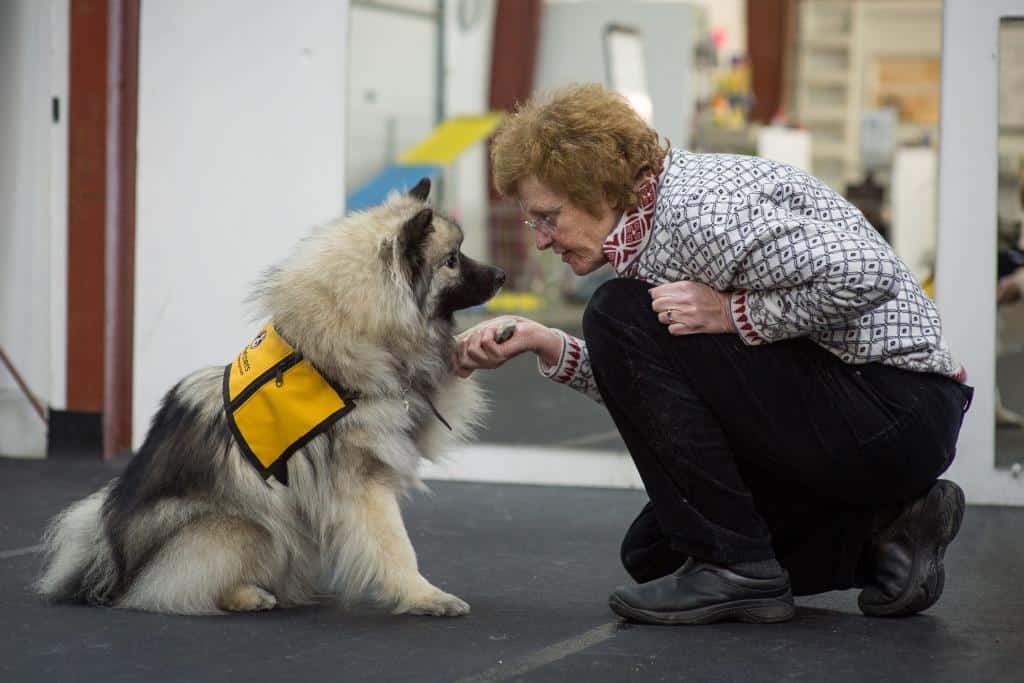 Grooming requirements. Grooming isn’t just about making sure a therapy animal looks, smells, and feels nice (though those are good things). It also helps reduce the possibility that they will pass on an infection that might be carried on fur, hair, or feathers. Therapy animals must be bathed or cleaned no more than 24 hours before a visit, with special attention to eyes, ears, nose, feet, and under the tail. They must also have their nails or hooves trimmed before visits, so that they aren’t likely to scratch a client.
Grooming requirements. Grooming isn’t just about making sure a therapy animal looks, smells, and feels nice (though those are good things). It also helps reduce the possibility that they will pass on an infection that might be carried on fur, hair, or feathers. Therapy animals must be bathed or cleaned no more than 24 hours before a visit, with special attention to eyes, ears, nose, feet, and under the tail. They must also have their nails or hooves trimmed before visits, so that they aren’t likely to scratch a client.
Animal waste and bodily fluids protocols. All registered Pet Partners therapy animals must be reliably trained or prepared as appropriate for their species to minimize the possibility of waste elimination during visits. If it should occur, handlers must be prepared to clean and disinfect immediately. We also prohibit the use of waste collection devices, which risk exposing clients to accumulated waste. Therapy animals must not visit if they have wounds or broken skin. And while it can be adorable for a therapy dog to give “kisses” to clients by licking, animal saliva can be another source of infection risk. We encourage handlers to minimize contact with their pets’ saliva as part of good infection control procedures.
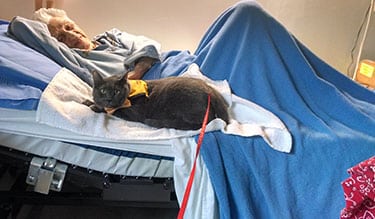 Barriers while visiting. If therapy animals will be sitting on clients’ laps or beds during visits, Pet Partners requires the use of barriers (such as a clean towel or sheet, or a disposable barrier) between the pet and the client. Barriers help prevent infection that could potentially be passed from the animal’s coat or feet to the client’s bedding or clothing. Barriers are typically provided by the facility so they may be immediately put into laundry or discarded after each individual client visit; sharing barriers between clients could also spread an infection.
Barriers while visiting. If therapy animals will be sitting on clients’ laps or beds during visits, Pet Partners requires the use of barriers (such as a clean towel or sheet, or a disposable barrier) between the pet and the client. Barriers help prevent infection that could potentially be passed from the animal’s coat or feet to the client’s bedding or clothing. Barriers are typically provided by the facility so they may be immediately put into laundry or discarded after each individual client visit; sharing barriers between clients could also spread an infection.
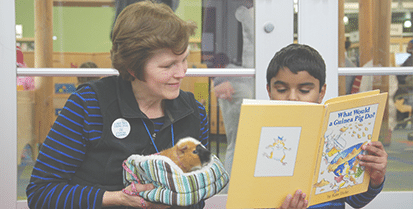 Disinfecting equipment used at visits. Any equipment used during visits needs to be washed or otherwise disinfected between visits. This includes things animals wear such as collars, leashes, harnesses, bandannas, and vests; items used to carry or transport therapy animals during visits such as beds, blankets, baskets, and strollers; and any other items that might touch both animals and clients, such as toys and brushes. This is why Pet Partners has specific requirements for equipment, and why any uncommon equipment requires a special accommodation. It’s also one of the reasons we don’t allow costumes during therapy animal visits—costumes are often difficult to clean and disinfect appropriately, in addition to having other risks.
Disinfecting equipment used at visits. Any equipment used during visits needs to be washed or otherwise disinfected between visits. This includes things animals wear such as collars, leashes, harnesses, bandannas, and vests; items used to carry or transport therapy animals during visits such as beds, blankets, baskets, and strollers; and any other items that might touch both animals and clients, such as toys and brushes. This is why Pet Partners has specific requirements for equipment, and why any uncommon equipment requires a special accommodation. It’s also one of the reasons we don’t allow costumes during therapy animal visits—costumes are often difficult to clean and disinfect appropriately, in addition to having other risks.
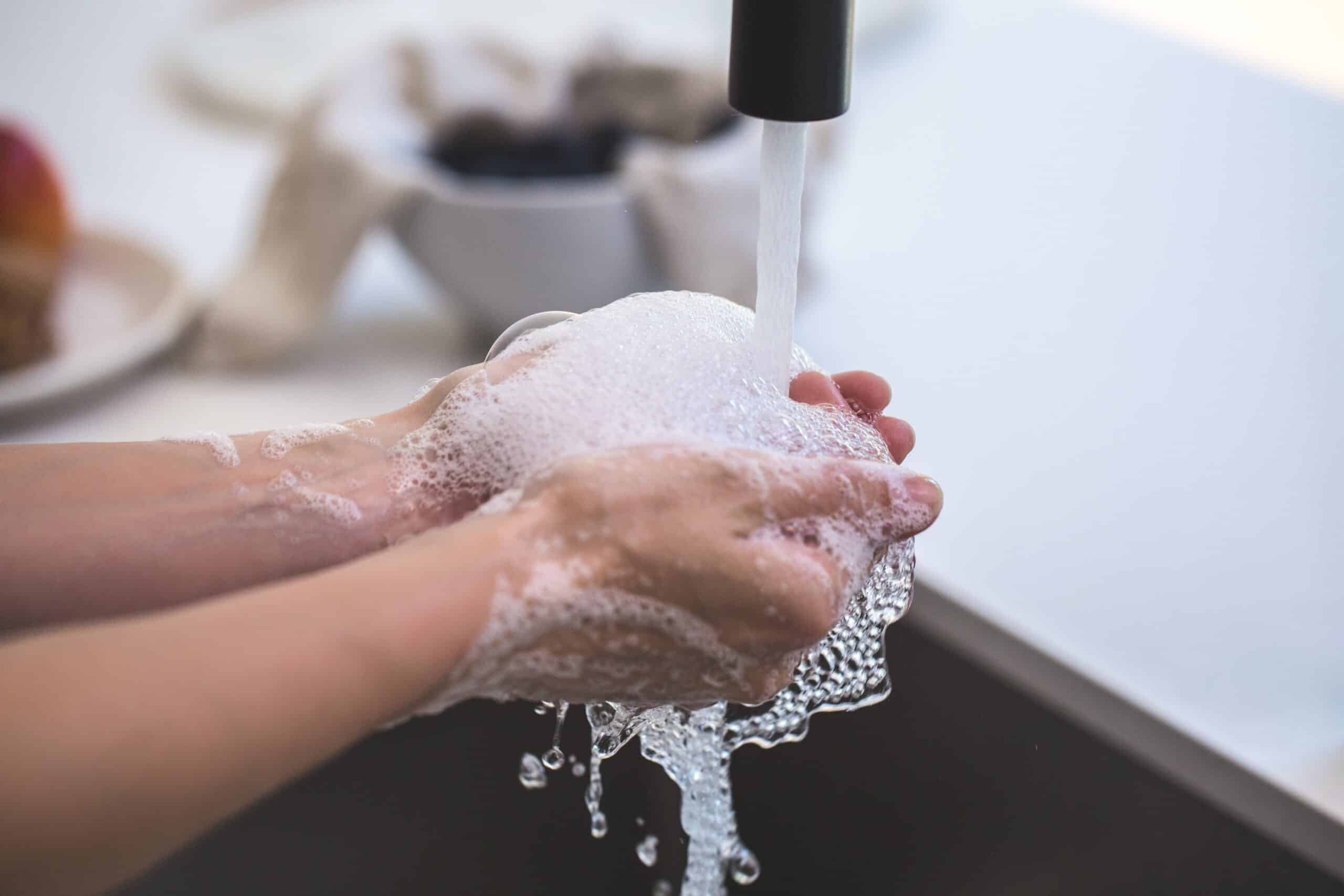 Hand hygiene protocols. One of the most important ways to prevent infection during therapy animal visits is about the people visiting with the animals: hand hygiene. One study found that E. coli infections could be passed from the hands of people petting therapy dogs onto the dogs’ coats, and then on to the next person to pet the dogs. So hand hygiene is critical to helping minimize infection. Every person interacting with a therapy animal should wash their hands both before and after touching the animal, to avoid passing on anything on their hands. If hand washing isn’t feasible in some circumstances, people should use alcohol-based hand sanitizer; Pet Partners handlers carry hand sanitizer during visits to make it easier for clients to use good hand hygiene.
Hand hygiene protocols. One of the most important ways to prevent infection during therapy animal visits is about the people visiting with the animals: hand hygiene. One study found that E. coli infections could be passed from the hands of people petting therapy dogs onto the dogs’ coats, and then on to the next person to pet the dogs. So hand hygiene is critical to helping minimize infection. Every person interacting with a therapy animal should wash their hands both before and after touching the animal, to avoid passing on anything on their hands. If hand washing isn’t feasible in some circumstances, people should use alcohol-based hand sanitizer; Pet Partners handlers carry hand sanitizer during visits to make it easier for clients to use good hand hygiene.
We take our commitment to infection control seriously, and the standards of our Therapy Animal Program help ensure that our therapy animal teams are making visits that are as safe as possible. In addition to our standards and policies, we offer additional education for our handlers with our online course in infection prevention and control, which is endorsed by the Society for Healthcare Epidemiology of America (SHEA). This course is also available to the public, and we encourage anyone involved with AAI and therapy animal visitation to take it.
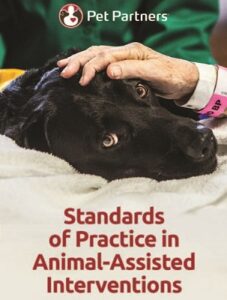 We have also led the way on standards for therapy animals with our publication, Standards of Practice in Animal-Assisted Interventions. Originally published in 1996, this publication was revised and re-released in 2019 with current best practices animals and handlers should meet, regardless of their organizational affiliation. Anyone working with AAI can benefit from reading this publication.
We have also led the way on standards for therapy animals with our publication, Standards of Practice in Animal-Assisted Interventions. Originally published in 1996, this publication was revised and re-released in 2019 with current best practices animals and handlers should meet, regardless of their organizational affiliation. Anyone working with AAI can benefit from reading this publication.
There are some risks associated with therapy animal visits, and possibility of infection is something that always needs to be kept in mind. The standards and policies of our Therapy Animal Program are specifically designed to minimize risks, including the risk of infection, and to help make therapy animal visits as safe as possible. The benefits of the human-animal bond are significant, and we want to be sure every visit with a Pet Partners team is safe as well as effective.
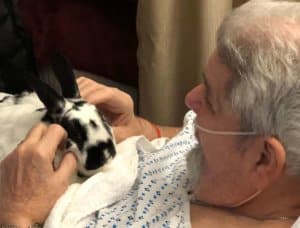
[i] Centers for Disease Control and Prevention (n.d.). Zoonotic Diseases. Retrieved from https://www.cdc.gov/onehealth/basics/zoonotic-diseases.html